20 Essential Tools for DIY Plumbing
Posted by Express Sewer & Drain Team on

Do-it-yourself projects continue to grow in popularity as people tackle home projects on their own to save money, beat stress, and gain a sense of self-accomplishment. In fact, DIY trend statistics show that nearly 50% of U.S. homeowners took on DIY home improvement projects in 2019, and a 4.2% rise in DIY home projects is expected in 2022. One problem area some homeowners try to solve on their own is plumbing.
20 Tools Needed for Your Plumbing Toolbox
Whether the problem is in the kitchen, the bathroom, or anywhere else in the home, a lot of plumbing problems can creep up that can sometimes be handled by homeowners. To tackle these challenges, however, requires some must-have plumbing tools. So, let’s take a look at 20 plumbing repair tools and their uses and why they should be in any DIYers toolbox.
1. Plungers
 Let’s start with a plumbing tool that needs no introduction, the plunger. But, did you know you should have two plungers? The flange plunger for toilets has a longer handle and a soft, smaller cup (known as a flange) that extends down the bottom end of the plunger to fit inside a standard toilet drain, creating an effective seal to apply more force on the blockage. The cup plunger is best for flat surfaces like sinks and bathtubs, as the flat cup works to create a vacuum over the drain and dislodge the clog.
Let’s start with a plumbing tool that needs no introduction, the plunger. But, did you know you should have two plungers? The flange plunger for toilets has a longer handle and a soft, smaller cup (known as a flange) that extends down the bottom end of the plunger to fit inside a standard toilet drain, creating an effective seal to apply more force on the blockage. The cup plunger is best for flat surfaces like sinks and bathtubs, as the flat cup works to create a vacuum over the drain and dislodge the clog.
2. Tongue-and-Groove Pliers
 Pliers are a great tool to grip, tighten, loosen, twist, pull, push, or hold something. Serving as an extra hand that can keep things in place, these pliers are great for tightening and loosening your plumbing system as needed, such as during a leak. Remember to wrap your fine fixtures with a rag before applying these to avoid damage from the serrated jaws.
Pliers are a great tool to grip, tighten, loosen, twist, pull, push, or hold something. Serving as an extra hand that can keep things in place, these pliers are great for tightening and loosening your plumbing system as needed, such as during a leak. Remember to wrap your fine fixtures with a rag before applying these to avoid damage from the serrated jaws.
3. Hacksaw
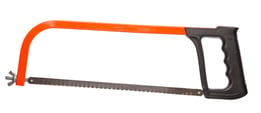 Hacksaws may look flimsy, but they have the ability to cut through metal and plastic pipes, bolts, nuts, screws, and hardware. Remember to be sure the blade is tense in the frame to make precise cuts, and always keep extra blades on hand in case of a break.
Hacksaws may look flimsy, but they have the ability to cut through metal and plastic pipes, bolts, nuts, screws, and hardware. Remember to be sure the blade is tense in the frame to make precise cuts, and always keep extra blades on hand in case of a break.
3. Metal File
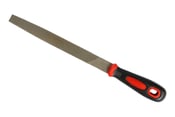 When you’re through with the hacksaw, the metal file can smooth the rough metal edges. Consider keeping two files in your plumber’s toolbox: a half-round that has both rounded and flat surfaces and a rat-tail file that is round and tapered.
When you’re through with the hacksaw, the metal file can smooth the rough metal edges. Consider keeping two files in your plumber’s toolbox: a half-round that has both rounded and flat surfaces and a rat-tail file that is round and tapered.
4. Adjustable Wrench
 These versatile wrenches are adjustable, just as the name suggest. This makes them very useful for smaller jobs like replacing faucets and showerheads. Better yet? Even quality adjustable wrenches are cheap, so you can keep a variety of sizes in your plumbing toolbox without breaking your budget.
These versatile wrenches are adjustable, just as the name suggest. This makes them very useful for smaller jobs like replacing faucets and showerheads. Better yet? Even quality adjustable wrenches are cheap, so you can keep a variety of sizes in your plumbing toolbox without breaking your budget.
5. Basin Wrench
 When you need to loosen nuts that hold together faucets, the basin wrench is your best friend. Its unique long shaft makes it easy to reach into deep and narrow spaces behind the sink, and its swiveling jaw enables you to effortlessly lock onto the nuts. Other tools don’t have the basin wrench's unique design, making it one of the best tools for plumbers.
When you need to loosen nuts that hold together faucets, the basin wrench is your best friend. Its unique long shaft makes it easy to reach into deep and narrow spaces behind the sink, and its swiveling jaw enables you to effortlessly lock onto the nuts. Other tools don’t have the basin wrench's unique design, making it one of the best tools for plumbers.
6. Shower Valve Socket Wrench
 Every DIY plumber eventually finds themselves working on a shower! This wrench is designed for installing and removing shower valves, tub fittings, and nuts. It’ll make any DIY shower project much easier to accomplish for homeowners.
Every DIY plumber eventually finds themselves working on a shower! This wrench is designed for installing and removing shower valves, tub fittings, and nuts. It’ll make any DIY shower project much easier to accomplish for homeowners.
7. Pipe Wrench
 You will need two of these for your plumbing toolbox: one to tighten and loosen the threaded pipes, fittings, and nuts, and the other for gripping and holding. If you feel that the grip of the pipe wrench will damage the metal of your pipes in some way, place a cloth in between the wrench and the metal and the pipe should experience little to no scratching.
You will need two of these for your plumbing toolbox: one to tighten and loosen the threaded pipes, fittings, and nuts, and the other for gripping and holding. If you feel that the grip of the pipe wrench will damage the metal of your pipes in some way, place a cloth in between the wrench and the metal and the pipe should experience little to no scratching.
8. Pipe Extractor
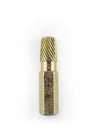 That pipe wrench won’t do you much good if you come across a broken-off piece of pipe. When a piece of pipe breaks off in the fitting, it’s very difficult to remove without a pipe extractor, also known as a nipple extractor. This tool allows you to quickly remove pipes that are broken off inside fittings making it one of your essential tools for plumbing repair.
That pipe wrench won’t do you much good if you come across a broken-off piece of pipe. When a piece of pipe breaks off in the fitting, it’s very difficult to remove without a pipe extractor, also known as a nipple extractor. This tool allows you to quickly remove pipes that are broken off inside fittings making it one of your essential tools for plumbing repair.
9. Drain Snake
 Drain snakes are ideal for removing clogs from small drains such as sinks and bathtubs. Using a manual crank, a drain snake winds down through the drain until it reaches the clog and then captures it, so you can pull it out the way it went in. Check out our step-by-step drain snaking blog.
Drain snakes are ideal for removing clogs from small drains such as sinks and bathtubs. Using a manual crank, a drain snake winds down through the drain until it reaches the clog and then captures it, so you can pull it out the way it went in. Check out our step-by-step drain snaking blog.
10. Toilet Auger
 Similar to a drain snake (but often equipped with bowl guards to minimize damage to porcelain bowls), the toilet auger also uses a manual crank to wind down the drain. However, rather than pull the obstruction back up, it’s designed to break down the clog and force it through the sewage system as normal.
Similar to a drain snake (but often equipped with bowl guards to minimize damage to porcelain bowls), the toilet auger also uses a manual crank to wind down the drain. However, rather than pull the obstruction back up, it’s designed to break down the clog and force it through the sewage system as normal.
11. Plumber’s Tape
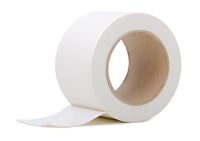 One of many essentials for DIY and known as “the duct tape of plumbing,” plumber’s tape is used on pipe threads to join connections together or stop leaks (water, air, or gas). You may also hear it referred to as Teflon tape or thread seal tape. Just wrap a few layers around clean, dry threads for an ideal seal.
One of many essentials for DIY and known as “the duct tape of plumbing,” plumber’s tape is used on pipe threads to join connections together or stop leaks (water, air, or gas). You may also hear it referred to as Teflon tape or thread seal tape. Just wrap a few layers around clean, dry threads for an ideal seal.
12. Plumber's Putty
 Otherwise known as jointing compound, plumber’s putty can help create a watertight seal. Just a dab of plumber's putty can ward off leaks on replacement or upgrade faucets and drains, and keep parts firmly in place.
Otherwise known as jointing compound, plumber’s putty can help create a watertight seal. Just a dab of plumber's putty can ward off leaks on replacement or upgrade faucets and drains, and keep parts firmly in place.
13. Putty Knife
 This cheap yet essential tool will help you apply and remove caulk and toilet wax residue, and it’s a necessity when working with putty.
This cheap yet essential tool will help you apply and remove caulk and toilet wax residue, and it’s a necessity when working with putty.
14. Caulk Gun
 All DIY plumbers should have one of these in their holster, er, plumber’s toolkit. You’ll need it when repairing seals around sinks, toilets, or tubs. Simply load the caulk tube into the gun and squeeze the trigger to push the caulk out of the tip.
All DIY plumbers should have one of these in their holster, er, plumber’s toolkit. You’ll need it when repairing seals around sinks, toilets, or tubs. Simply load the caulk tube into the gun and squeeze the trigger to push the caulk out of the tip.
15. Pipe and Tube Cutter
 This essential plumbing tool provides a quick, easy, and clean way to cut pipe, including hard and soft copper, and aluminum and brass pipes and tubings. We recommend getting both a standard-size tubing cutter and a close-quarter mini-cutter which works well in tight, confined spaces.
This essential plumbing tool provides a quick, easy, and clean way to cut pipe, including hard and soft copper, and aluminum and brass pipes and tubings. We recommend getting both a standard-size tubing cutter and a close-quarter mini-cutter which works well in tight, confined spaces.
16. Pipe and Tube Bender
 Rather than cut piping or tubing, a pipe and tube bender tool allows you to easily bend a range of pipes and tubes in the direction you want. Using a pipe and tube bender also avoids having to use special fittings that redirect piping or tubing.
Rather than cut piping or tubing, a pipe and tube bender tool allows you to easily bend a range of pipes and tubes in the direction you want. Using a pipe and tube bender also avoids having to use special fittings that redirect piping or tubing.
17. Propane Torch
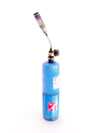 A portable self-igniting gas welding torch can be used for heat soldering tasks, heat treating, brazing large diameter copper pipes, thawing pipes, removing tile and paint, and even melting gold/silver and other metals. When you pick one up, remember to also grab some fire-resistant cloth to protect combustible surfaces nearby.
A portable self-igniting gas welding torch can be used for heat soldering tasks, heat treating, brazing large diameter copper pipes, thawing pipes, removing tile and paint, and even melting gold/silver and other metals. When you pick one up, remember to also grab some fire-resistant cloth to protect combustible surfaces nearby.
18. Stubby Screwdriver
 DIY plumbing jobs will get you into some tight spots. So, always have a stubby screwdriver in your plumber’s toolkit when working in confined quarters or trying to get at hard-to-reach screws.
DIY plumbing jobs will get you into some tight spots. So, always have a stubby screwdriver in your plumber’s toolkit when working in confined quarters or trying to get at hard-to-reach screws.
19. Faucet Key
 These small tools come in a set since you’re likely to deal with many different stem settings based on your DIY project. Faucet keys are made to open and close spigots and sillcocks, which you’ll likely encounter in a DIY plumbing project.
These small tools come in a set since you’re likely to deal with many different stem settings based on your DIY project. Faucet keys are made to open and close spigots and sillcocks, which you’ll likely encounter in a DIY plumbing project.
20. Faucet Packing and Washers
 These are easy to remove and find in any hardware store, just make sure you know the exact models of the parts your plumbing uses. It is always a good idea to keep extra faucet packing and washers available, since they create the seal around the faucet stem.
These are easy to remove and find in any hardware store, just make sure you know the exact models of the parts your plumbing uses. It is always a good idea to keep extra faucet packing and washers available, since they create the seal around the faucet stem.
Can’t DIY? Contact the Professionals at Express Sewer & Drain
Sometimes, a DIY plumbing job can go wrong and cost you a lot more than you would’ve spent on a professional plumber (check out some common DIY plumbing mistakes). If you’re concerned that a job may be out of your league, there’s no shame in that! Simply contact the professionals at Express Sewer & Drain. Our plumbing experts can tackle any job (and even share some plumbing tips while we’re there). For any and all of your plumbing system needs or questions, contact us today for a free quote.

Topics: Commercial Plumbing, Home Plumbing, Plumbing Tips






